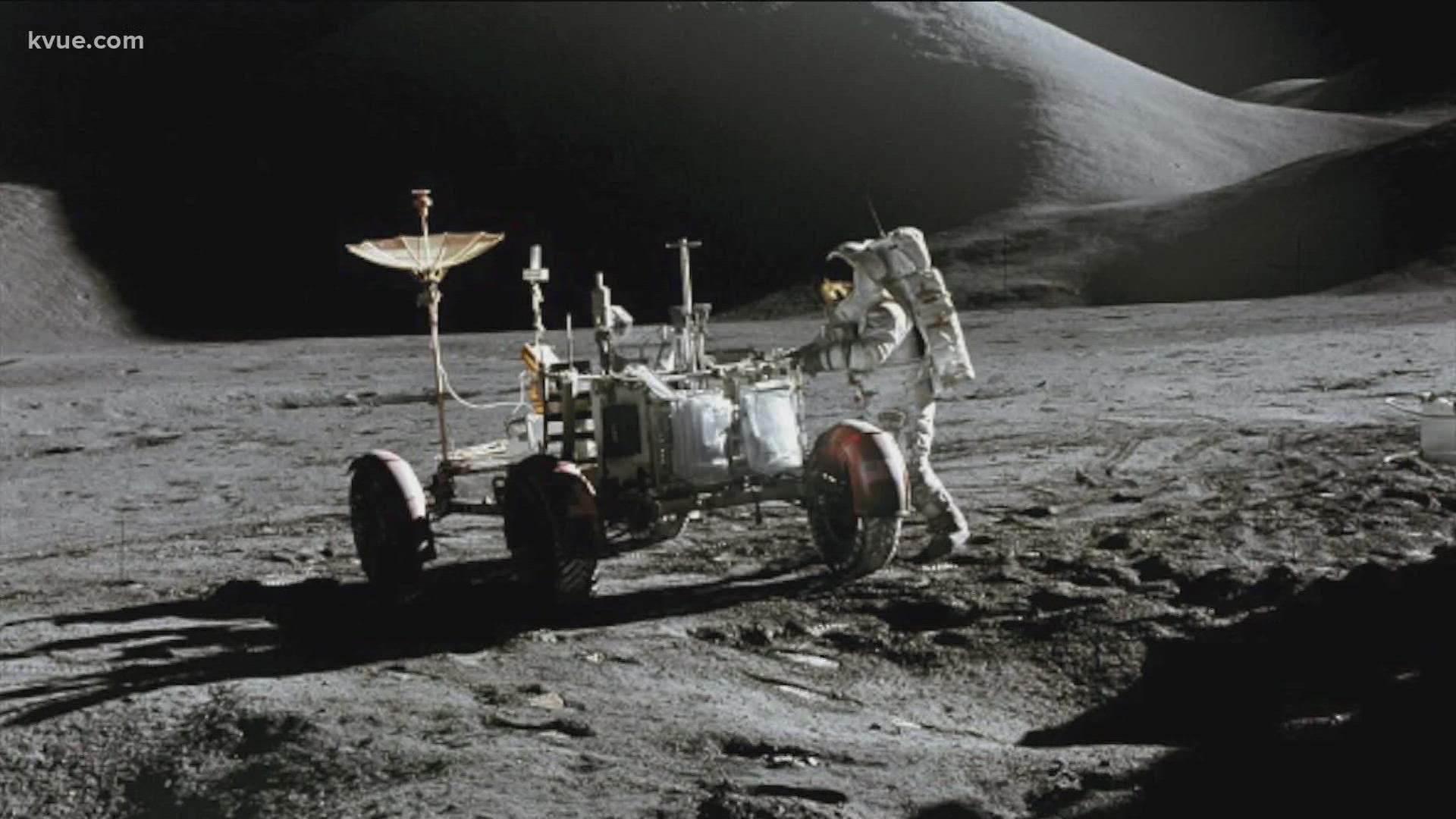AUSTIN, Texas — If you get a chance to step outside on one of these warm summer nights, you might glance up at the moon. It's hard to imagine that 50 years ago this week, three Americans had just landed their spacecraft on the moon.
It was known as the Apollo 15 Mission – the fourth time the U.S. sent astronauts to the moon.
But this visit, this week in 1971, was different. It was the first time astronauts traveled on the surface of the moon in a battery-operated, 400-pound, four-wheel lunar roving vehicle. They drove along the moon’s rugged terrain picking up rock samples, at times venturing nearly 20 miles from their spacecraft.
This was also the mission that Astronaut David Scott got to test a scientific theory. The question was: If you drop a hammer and a feather from the same height, will the hammer fall to the ground faster than the feather since it’s heavier?
On Earth, the feather would likely float on air currents while the hammer would hit the ground first. But what about in the vacuum of space?
The answer? Based on Scott’s experiment, on the moon, both hammer and feather reached the ground at the same time, proving Galileo’s 400-year-old theory that objects dropped from the same height reach the surface at the same time regardless of their weight.
The astronauts returned to Earth safely, but they left their lunar rover on the moon. They also left behind a small memorial dedicated to those Americans and Russians who had died during early space exploration.
It all happened this week in 1971.
PEOPLE ARE ALSO READING:

